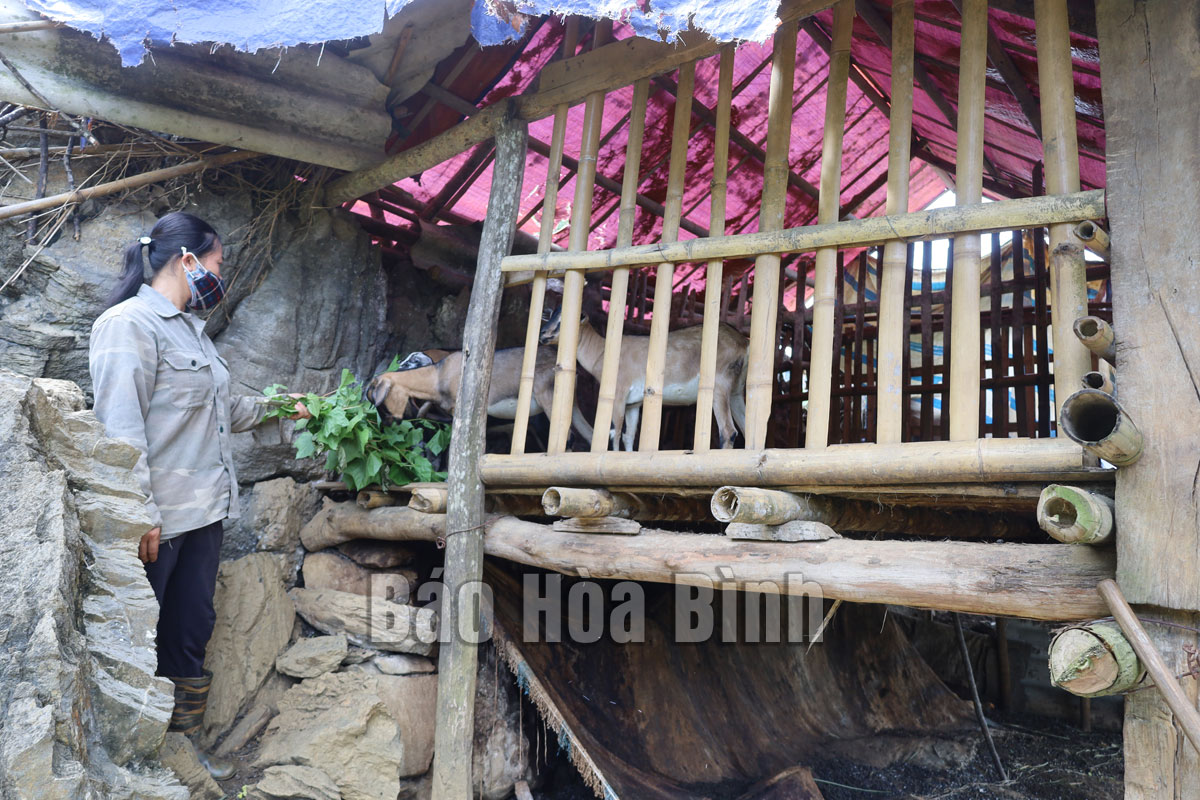
(HBO) - Le Chi Huyen, Vice Chairman of the Tan Lac District People's Committee, said that after the 2016-2020 period, projects that aim to support production development, diversify livelihoods and multiply sustainable poverty reduction models in extremely difficult communes in Tan Lac district still maintain effectiveness. Supporting activities from the project have gradually improved people's lives and incomes, along with other poverty reduction policies.
By the end of 2021, the poverty rate of the district decreased
to 8.69% and its per capita income hit 50 million VND (about 2,000 USD) per
year.
Households in
Tham hamlet in Tan Lac district’s Suoi Hoa commune escape poverty thanks to the
multiplying of sustainable poverty reduction models.
In the past, Dinh Cong Nhiem'sfamily in Buong hamlet, Quyet Chien
commune, suffered difficulties and had to rely on the Government's support.
However, their hardship has been lessened after joining a livelihood
diversification model. Especially, he was provided with young chayote trees,
fertilisers and techniques for taking care of the trees.
In addition to earning from growing chayotes, he also engages in breeding
livestock to raise income, thus, his family is no longer on the list of poor
households.
Suoi Hoa commune once had 25 poor and near-poor households benefiting from the
project of multiplying the sustainable poverty model.
Bui Thi Thuy, from Tham hamlet, said that as one of the households
participating in the model, her family was provided with three breeding goats.
After five years, her goat herd reach hundreds of heads. With accumulated
capital from selling goats, Thuy also raised chickens and pigs, thereby, her
family now enjoys a stable income.
By the end of 2020, only five communes in the district have a poverty rate of
over 20% while eight communes and towns have a poverty rate of less than 10%
while three communes have a rate of less than 15%. The results are attributed
to the implementation of support production development and diversify
livelihood and multiplying of sustainable poverty reduction models in extremely
difficult communes as well as those that are included in Programme 30a and
Programme 135.
The total capital for supporting production in extremely
difficult communes was estimated at over 18.5 billion VND.
The district is focusing on carrying out the plans for 2022 and
the 2022 – 2025 period. It is also reviewing the number of poor and near-poor
households this year and those with average living standards.
Along with investing in upgrading infrastructure at extremely difficult
communes, the district will continue to implement projects to support
production, diversify livelihoods, and multiply poverty reduction models, thus
contributing to realising poverty reduction targets in beneficiary communes and
hamlets./.
The emulation movement "Hoa Binh joining hands to build new-style rural areas” has been widely spreading, becoming a driving force that motivates the localities to renew rural landscapes and improve the material and spiritual lives of the residents. In this movement, the people play a central role-both as the main implementers and direct beneficiaries of its outcomes.
In response to the global digital revolution, Hoa Binh Newspaper is transforming itself into a modern and multi-platform media hub, blending cutting-edge technology with a restructured newsroom and a new generation of tech-savvy journalists.
Hoa Binh province’s Association of the Elderly recently held a conference to review the project on expanding the inter-generation self-help club model until 2025.
In a move to implement Resolution No. 57-NQ/TW, issued on December 22, 2024 by the Politburo, which targets breakthroughs in science-technology development, innovation, and digital transformation, the Hoa Binh provincial Department of Health has issued a plan to roll out the "Digital Literacy for All” campaign within the local health sector.
An Nghia Commune (Lạc Sơn District) is one of the communes that achieved the tha standard of the national new rural area in 2018. Entering a new development phase, the commune is now trying to meet the criteria for the advanced new rural development. With the strong political will and the public consensus, the commune is gradually overcoming the challenges to reach this goal, aiming for the sustainable development.



